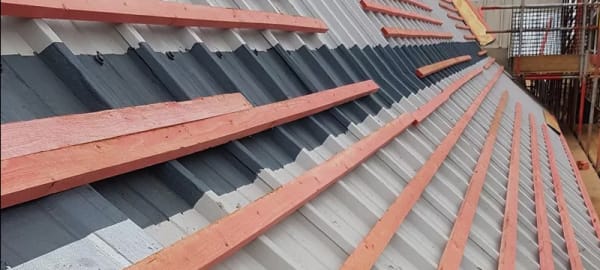
Can I use carbon steel fasteners for timber battens or studs?
- Read time: 3 minutes
- Date: 25 Jan 2022
- Rainscreen & Façades
- Sheeting & Cladding
We would advise not to, as the carbon steel in the fasteners will react with any copper ions in the wood preservative used to treat the timber battens or studs. This can cause bi-metallic or galvanic corrosion, resulting in premature failure of the fastener. To prevent this we suggest, you should always use stainless steel fasteners when fixing timber battens or studs.
For further information on the science behind bi-metallic corrosion, see the article below.
What is bi-metallic corrosion?
More information can also be found through the NFRC at: HSGS11 Correct installation of slating and tiling battens

How does the wood preservative cause bi-metallic corrosion?
Most waterborne preservatives used to treat wood contain copper salts. As the wood gets wet due to rain or condensation, very small quantities of the copper salts, called copper ions, dissolve in the water.
If carbon steel fasteners have been used, the rainwater will act as an electrolyte. The copper, which is the more noble metal, will become the cathode (positively charged) and the fastener will become the anode (negatively charged). As a result, over time the copper ions will be deposited onto the electronegative fasteners, causing an interaction between the two dissimilar metals (copper and carbon steel) resulting in bi-metallic corrosion.
Can I use carbon steel fasteners if they are behind a breather membrane?
No, the risk is still too great. The fasteners are only protected by a breather membrane with laps. This means that if there is any damage to the membrane, water could penetrate the build-up. If fasteners are on the cold side of the insulation, it is possible for condensation to form on the wooden battens.
Electrical conductivity, which causes bi-metallic corrosion, will increase when the moisture content of wood rises above 18%. However, most wood used in construction already has a moisture content around this level so any additional moisture caused by penetration of the breather membrane or condensation will quickly result in bi-metallic corrosion.






